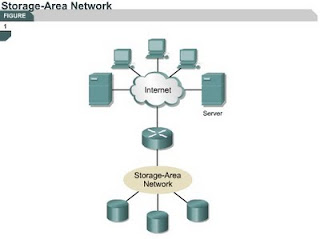Network protocols
2.1.5 Protocol suites are collections of protocols that enable network communication between hosts. A protocol is a formal description of a set of rules and conventions that govern a particular aspect of how devices on a network communicate. Protocols determine the format, timing, sequencing, and error control in data communication. Without protocols, the computer cannot make or rebuild the stream of incoming bits from another computer into the original format.
Protocols control all aspects of data communication, which include the following:
• How the physical network is built
• How computers connect to the network
• How the data is formatted for transmission
• How that data is sent
• How to deal with errors
These network rules are created and maintained by many different organizations and committees. Included in these groups are the Institute of Electrical and Electronic Engineers (IEEE), American National Standards Institute (ANSI), Telecommunications Industry Association (TIA), Electronic Industries Alliance (EIA) and the International Telecommunications Union (ITU), formerly known as the Comité Consultatif International Téléphonique et Télégraphique (CCITT).
Local-area networks (LANs)
2.1.6 LANs consist of the following components:
• Computers
• Network interface cards
• Peripheral devices
• Networking media
• Network devices
LANs allow businesses to locally share computer files and printers efficiently and make internal communications possible. A good example of this technology is e-mail. LANs manage data, local communications, and computing equipment.
Some common LAN technologies include the following:
• Ethernet
• Token Ring
• FDDI
Wide-area networks (WANs)
2.1.7 WANs interconnect LANs, which then provide access to computers or file servers in other locations. Because WANs connect user networks over a large geographical area, they make it possible for businesses to communicate across great distances. WANs allow computers, printers, and other devices on a LAN to be shared with distant locations. WANs provide instant communications across large geographic areas.
Collaboration software provides access to real-time information and resources and allows meetings to be held remotely. WANs have created a new class of workers called telecommuters. These people never have to leave their homes to go to work.
WANs are designed to do the following:
• Operate over a large and geographically separated area
• Allow users to have real-time communication capabilities with other users
• Provide full-time remote resources connected to local services
• Provide e-mail, Internet, file transfer, and e-commerce services
Some common WAN technologies include the following:
• Modems
• Integrated Services Digital Network (ISDN)
• Digital subscriber line (DSL)
• Frame Relay
• T1, E1, T3, and E3
• Synchronous Optical Network (SONET)
Metropolitan-area networks (MANs)
2.1.8 The next page will introduce metropolitan-area networks (MANs).
Wireless bridge technologies that send signals across public areas can also be used to create a MAN. A MAN usually consists of two or more LANs in a common geographic area. For example, a bank with multiple branches may utilize a MAN. Typically, a service provider is used to connect two or more LAN sites using private communication lines or optical services. A MAN can also be created using wireless bridge technology by beaming signals across public areas.
Storage-area networks (SANs)
2.1.9 A storage-area network (SAN) is a dedicated, high-performance network used to move data between servers and storage resources. Because it is a separate, dedicated network, it avoids any traffic conflict between clients and servers.
SAN technology allows high-speed server-to-storage, storage-to-storage, or server-to-server connectivity. This method uses a separate network infrastructure that relieves any problems associated with existing network connectivity.
SANs offer the following features:
• Performance – SANs allow concurrent access of disk or tape arrays by two or more servers at high speeds. This provides enhanced system performance.
• Availability – SANs have built-in disaster tolerance. Data can be duplicated on a SAN up to 10 km (6.2 miles) away.
• Scalability – A SAN can use a variety of technologies. This allows easy relocation of backup data, operations, file migration, and data replication between systems.
The next page will introduce virtual private networks (VPNs).
Wednesday, November 18, 2009
Subscribe to:
Post Comments (Atom)







No comments:
Post a Comment